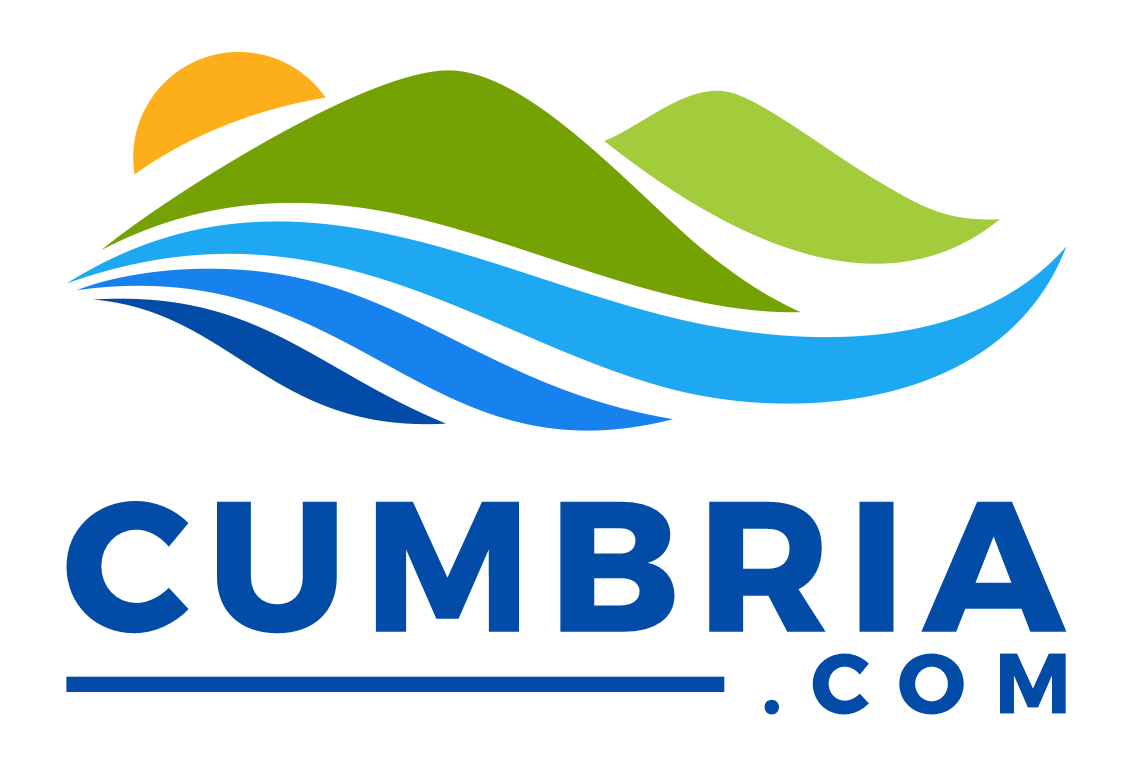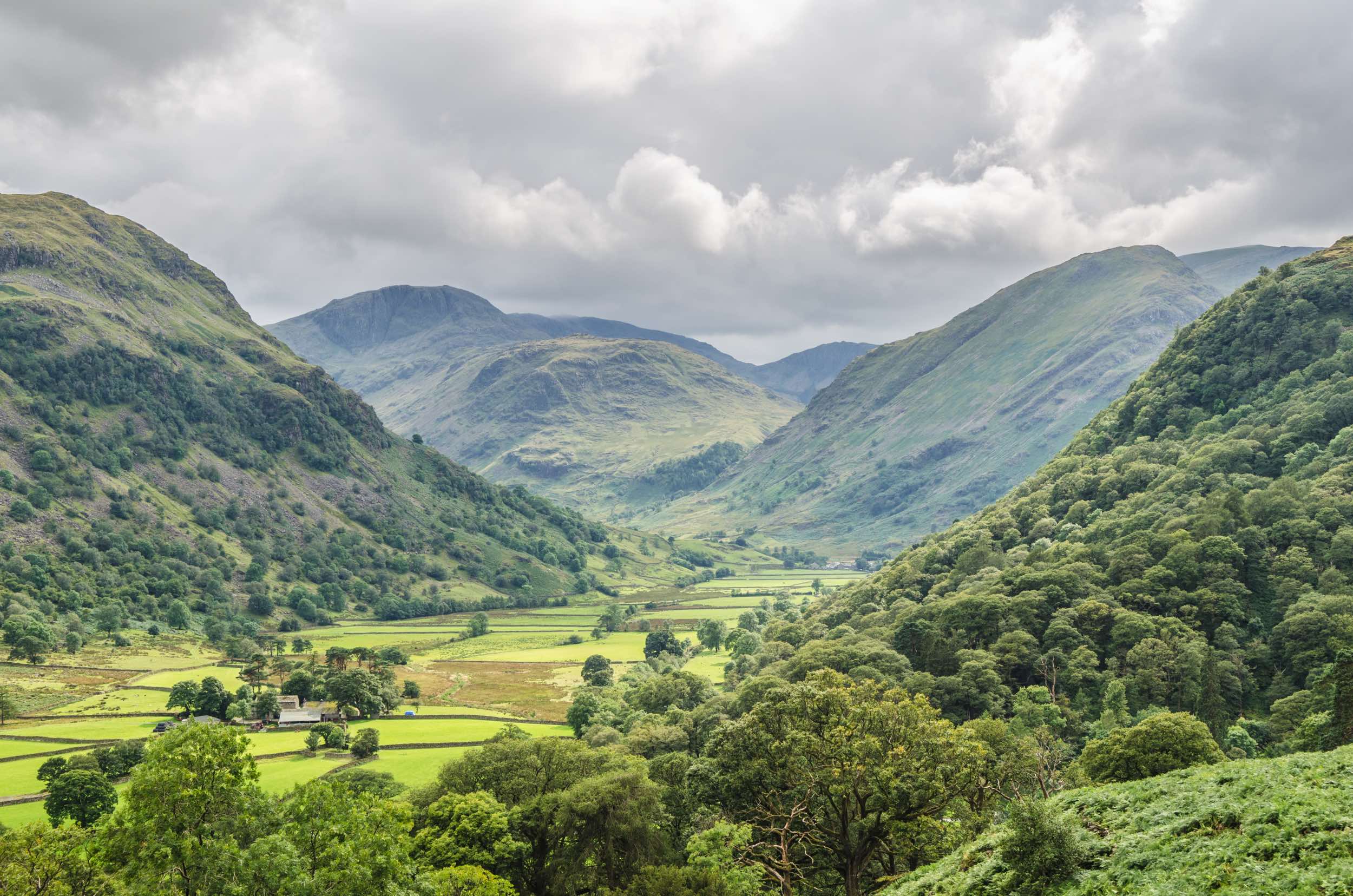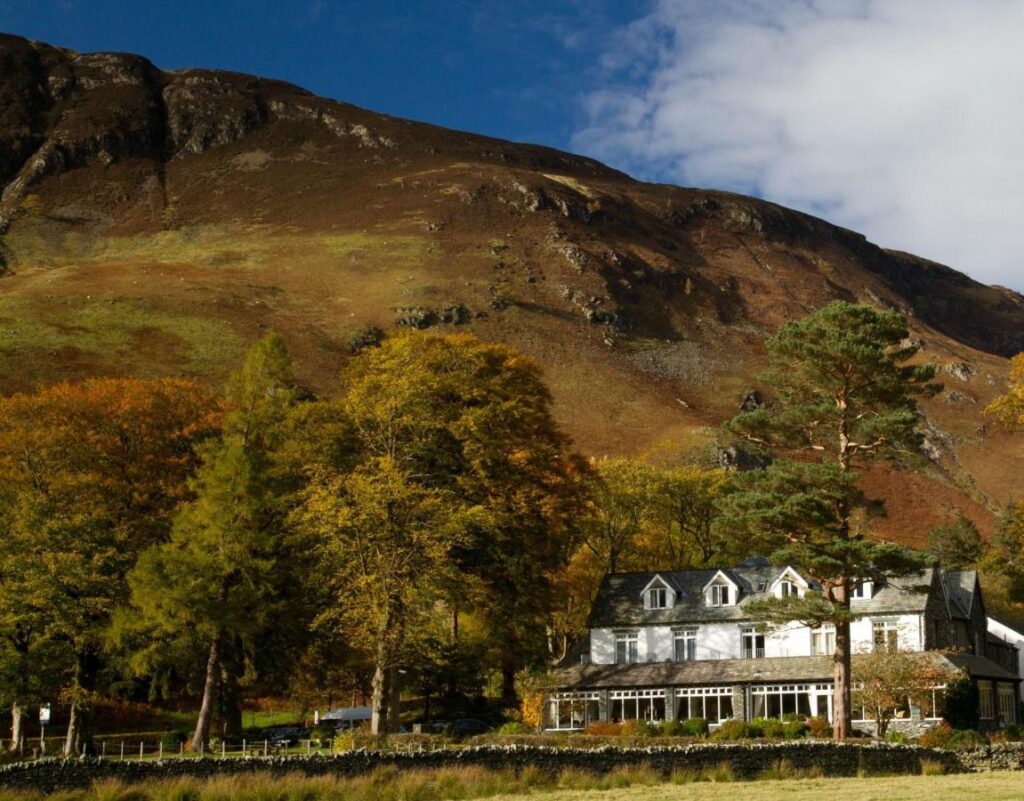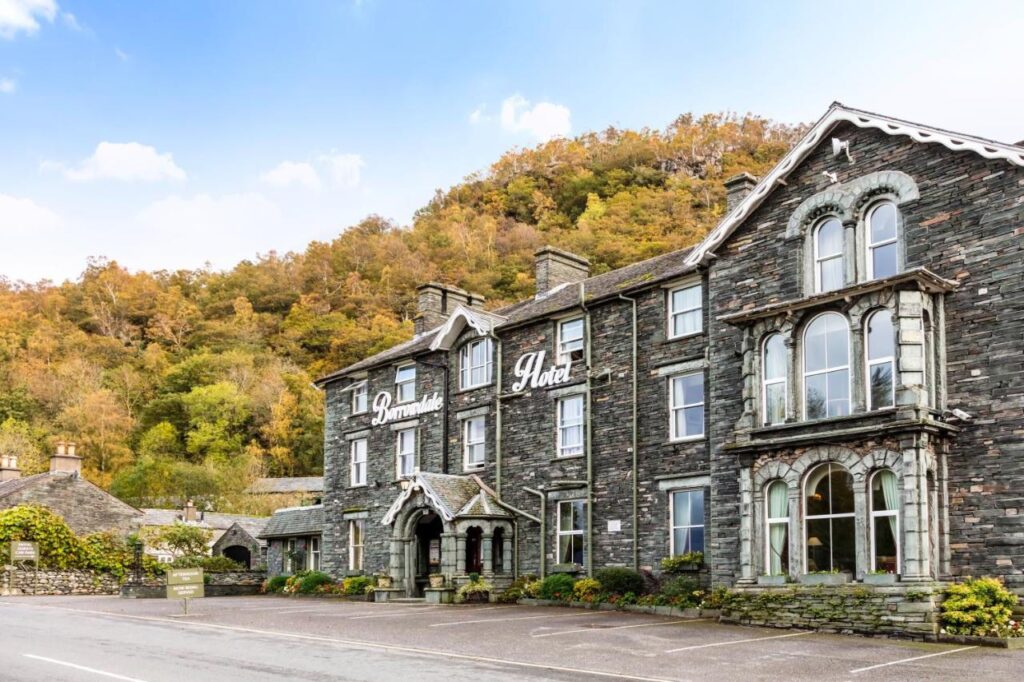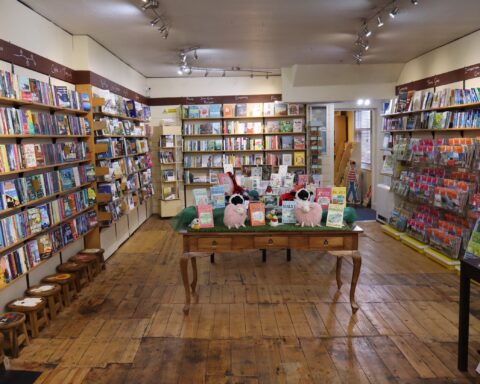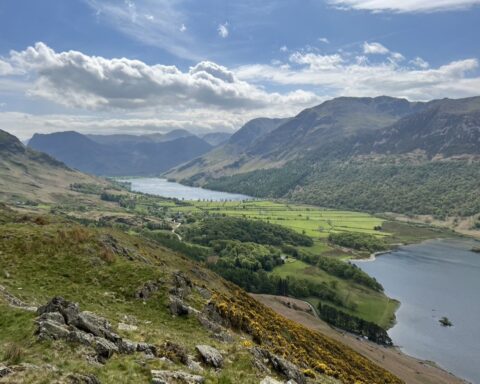Discovering Borrowdale’s Charm
Venturing south from Keswick, the traveler enters Borrowdale. They embark on a journey that showcases lakeside beauty spots, traditional villages, and ancient oak woodlands. Along the way, they discover caves, crags, and an abundance of fells. This journey is a highlight of any Lake District trip, appealing to a wide range of interests.
Derwentwater’s Majesty
The mouth of this beautiful valley is occupied by Derwentwater, the ‘Queen of the Lakes’. On the western side of the lake, the tree-lined shore transitions to the slopes of Cat Bells. To the east, Walla Crag and Falcon Crag rise majestically above Great Wood, showcasing the ancient woodlands that adorn Borrowdale.
The Jaws of Borrowdale
Just beyond the southern end of the lake and the village of Grange, the valley narrows dramatically. You have now entered the Jaws of Borrowdale. Here, the River Derwent surges through the narrow gap between the steep, tree-shrouded slopes of Castle Crag and Grange Fell. This is where visitors will find the Bowder Stone and, in a disused quarry, Millican Dalton’s cave.
Bucolic Bliss and Mountain Majesty in Borrowdale’s Heart
Beyond the Jaws, the valley widens once more, but the scree slopes and crags stretch to higher altitudes, creating a sense of enclosure. This landscape offers a feeling of total immersion in the mountains. At the valley bottom, a scene of bucolic serenity unfolds. Centuries-old farmhouses dot the landscape, and Herdwick sheep graze in verdant fields enclosed by dry-stone walls. The valley’s main settlements can be found in this area: Rosthwaite, Stonethwaite, Seathwaite and Seatoller.
Fell Walking in Borrowdale: A Hiker’s Paradise
Dozens of superb outings on the high fells start from this part of Borrowdale, including hikes up to Glaramara, Great Gable, High Spy and Dale Head. If you want to escape the crowds, consider climbing Rosthwaite Fell from Stonethwaite, or, if you don’t mind sharing the fells, one of the classic routes on to Scafell Pike starts from Seathwaite.
Borrowdale’s Ancient Woodlands: A Rainforest in England
Like elsewhere in Borrowdale, ancient woods drape the banks of the River Derwent and creep part-way up the fellsides. These are rare remnants of an immense oakwood that once cloaked Europe’s entire Atlantic coast – from Portugal to Norway. Birch, ash, larch and yew are among the tree species that share the spaces dominated by sessile oaks, while a lush covering of mosses, lichens and liverworts also flourishes. Thanks to Borrowdale’s high annual rainfall – this is, after all, the wettest place in England – the woods are classed as temperate rainforest. If you’re hoping to spot wildlife, you’ve come to the right place: red squirrels, otters, red and roe deer, peregrine falcons, barn owls, great spotted woodpeckers and dippers are among the many species you might encounter in the woods. In spring time, listen for the Borrowdale cuckoo, which returns from Africa to lay its eggs in other birds’ nests.
National Trust’s Stewardship: Accessing Borrowdale’s Treasures
The National Trust owns almost 30,000 acres of land in the area, including about a dozen farms and roughly half of Derwentwater. The conservation charity’s car parks (free to members) form the gateway to key attractions in the valley, and are used by outdoor enthusiasts looking to explore the area on foot or by bike. These are located at Great Wood, Kettlewell (beside Derwentwater), the Bowder Stone, Rosthwaite and Seatoller. Alternatively, the 78 bus runs the entire length of the valley, from Keswick to Seatoller, all year round.
